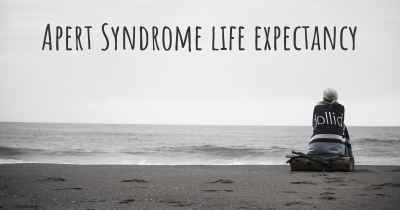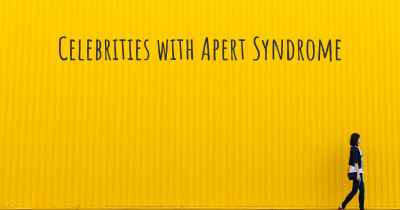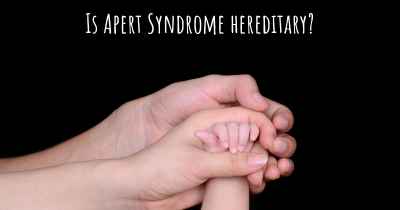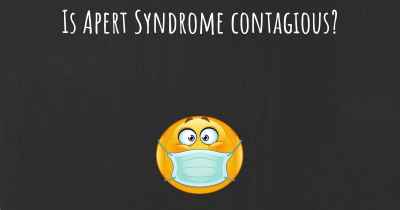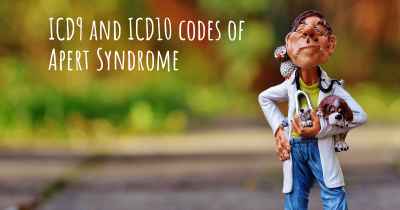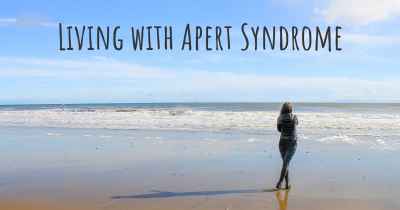What are the latest advances in Apert Syndrome?
Here you can see the latest advances and discoveries made regarding Apert Syndrome.
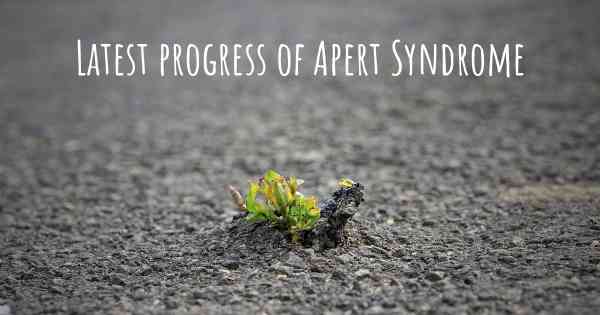
Apert Syndrome is a rare genetic disorder characterized by craniosynostosis, which is the premature fusion of certain skull bones, leading to abnormal head shape and facial features. It also affects the hands and feet, causing fusion of the fingers and toes. While there is no cure for Apert Syndrome, there have been significant advances in understanding and managing the condition.
Genetic Research and Diagnosis
Advances in genetic research have allowed for a better understanding of the underlying causes of Apert Syndrome. It is primarily caused by mutations in the FGFR2 gene, which plays a crucial role in the development of bones and tissues. Identifying these specific genetic mutations has enabled more accurate diagnosis and genetic counseling for affected individuals and their families.
Improved Surgical Techniques
Surgical interventions play a vital role in managing the physical manifestations of Apert Syndrome. Over the years, there have been significant advancements in surgical techniques, allowing for better outcomes and improved quality of life for individuals with the condition.
Cranial Vault Remodeling: One of the most common surgical procedures for Apert Syndrome is cranial vault remodeling. This procedure involves reshaping the skull to correct the abnormal head shape and relieve pressure on the brain. Surgeons use advanced imaging techniques, such as 3D CT scans, to plan and execute precise surgical interventions.
Hand and Foot Surgery: Fusion of the fingers and toes is another characteristic feature of Apert Syndrome. Surgeons can perform separation surgeries to separate the fused digits, improving hand and foot function. These procedures often involve complex bone and soft tissue reconstruction, and advancements in microsurgery techniques have greatly improved the outcomes.
Comprehensive Multidisciplinary Care
Apert Syndrome requires a multidisciplinary approach to care, involving various medical specialists. This approach ensures that individuals with Apert Syndrome receive comprehensive and coordinated care to address their specific needs.
Craniofacial Teams: Specialized craniofacial teams consisting of plastic surgeons, neurosurgeons, orthodontists, speech therapists, and other healthcare professionals work together to provide integrated care for individuals with Apert Syndrome. This collaborative approach helps in optimizing treatment plans and achieving the best possible outcomes.
Early Intervention: Early intervention is crucial in managing Apert Syndrome. Timely identification and intervention can help address developmental delays, speech and language difficulties, and other associated complications. Speech therapy, occupational therapy, and physical therapy are often recommended to support the overall development and well-being of affected individuals.
Supportive Technologies and Therapies
Advancements in technology have also contributed to improving the lives of individuals with Apert Syndrome.
Cranial Orthoses: Custom-made cranial orthoses, also known as helmets, can be used to reshape the skull in infants with Apert Syndrome. These helmets apply gentle pressure to specific areas of the skull, promoting proper growth and reducing the severity of cranial abnormalities.
Prosthetics and Assistive Devices: For individuals with hand and foot abnormalities, advancements in prosthetics and assistive devices have provided greater independence and functionality. Custom-designed prosthetic fingers and toes, as well as adaptive tools, can significantly improve the quality of life for those with Apert Syndrome.
Research and Future Perspectives
Ongoing research continues to explore potential treatments and interventions for Apert Syndrome.
Gene Therapy: Gene therapy holds promise for the future treatment of Apert Syndrome. By targeting the specific genetic mutations responsible for the condition, researchers aim to develop therapies that can correct or mitigate the effects of these mutations.
Stem Cell Research: Stem cell research offers potential avenues for regenerative medicine in Apert Syndrome. Scientists are investigating the use of stem cells to promote bone and tissue regeneration, which could potentially improve the outcomes of surgical interventions and reduce the need for multiple surgeries.
In conclusion, significant advances have been made in understanding and managing Apert Syndrome. Genetic research has improved diagnosis and genetic counseling, while surgical techniques have evolved to provide better outcomes for cranial and limb abnormalities. Comprehensive multidisciplinary care, supportive technologies, and ongoing research offer hope for further advancements in the future.
